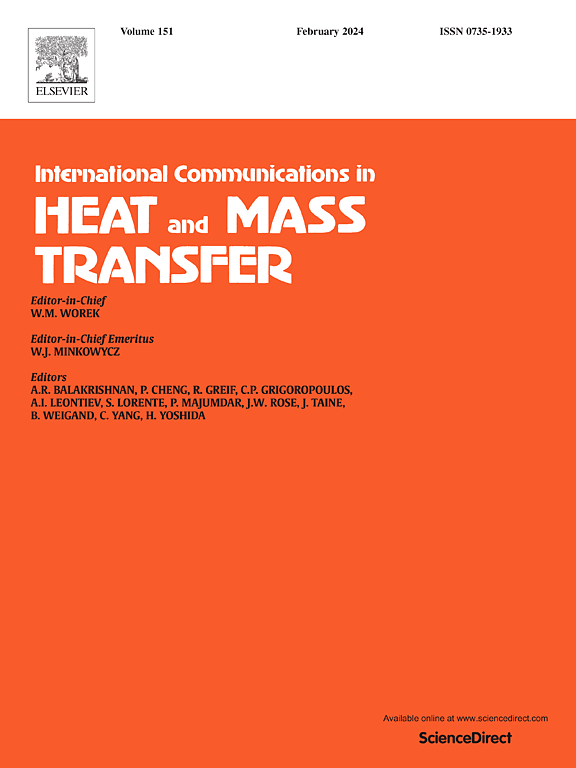Prediction of liquid film thickness in upward gas-liquid annular two-phase flows
IF 6.4
2区 工程技术
Q1 MECHANICS
International Communications in Heat and Mass Transfer
Pub Date : 2025-05-20
DOI:10.1016/j.icheatmasstransfer.2025.109096
引用次数: 0
Abstract
In the past, the majority of one-dimensional models for predicting liquid film thickness in gas-liquid annular two-phase flows have relied on various combinations of widely accepted dimensionless parameters. However, these combinations of commonly used dimensionless numbers mainly used gas and liquid Reynolds numbers and other dimensionless numbers introduced by simple models or data fitting. Because of this, though there are various forms of correlations or models for liquid film thickness in annular flows, their application ranges are limited. To broaden the applicable ranges, this study presents a novel model to predict liquid film thickness in vertical upward annular flow, derived from a one-dimensional force balance analysis. The model is derived from a first-principles force balance, linking film thickness to interfacial shear, wall shear, and gravitational forces. This mechanistic foundation enhances physical interpretability compared to purely empirical fits. In the proposed model, the influence of the interfacial inertia ratio on film thickness was found to be more pronounced compared to that of the Reynolds number ratio. Additionally, the impact of pipe diameter on film thickness was integrated into the model by validating its predictions against experimental data. The proposed model is capable of accurately predicting film thickness flows both in pipes and in rod bundles, which consist of an arrangement of rods.
气液两相向上环空流动液膜厚度预测
过去,大多数用于预测气液环空两相流液膜厚度的一维模型依赖于广泛接受的无量纲参数的各种组合。然而,这些常用的无量纲数的组合主要使用气体和液体雷诺数以及通过简单的模型或数据拟合引入的其他无量纲数。正因为如此,尽管存在各种形式的环空流动液膜厚度的相关关系或模型,但它们的应用范围有限。为了扩大适用范围,本文提出了一种基于一维力平衡分析的预测垂直向上环流液膜厚度的新模型。该模型推导自第一性原理力平衡,将薄膜厚度与界面剪切、壁剪切和重力联系起来。与纯粹的经验拟合相比,这种机械基础增强了物理可解释性。在该模型中,界面惯性比对膜厚的影响比雷诺数比更为显著。此外,通过对实验数据的验证,将管径对膜厚的影响纳入模型。所提出的模型能够准确地预测管道和由棒束组成的棒束中的膜厚流动。
本文章由计算机程序翻译,如有差异,请以英文原文为准。
求助全文
约1分钟内获得全文
求助全文
来源期刊
CiteScore
11.00
自引率
10.00%
发文量
648
审稿时长
32 days
期刊介绍:
International Communications in Heat and Mass Transfer serves as a world forum for the rapid dissemination of new ideas, new measurement techniques, preliminary findings of ongoing investigations, discussions, and criticisms in the field of heat and mass transfer. Two types of manuscript will be considered for publication: communications (short reports of new work or discussions of work which has already been published) and summaries (abstracts of reports, theses or manuscripts which are too long for publication in full). Together with its companion publication, International Journal of Heat and Mass Transfer, with which it shares the same Board of Editors, this journal is read by research workers and engineers throughout the world.

 求助内容:
求助内容: 应助结果提醒方式:
应助结果提醒方式:


